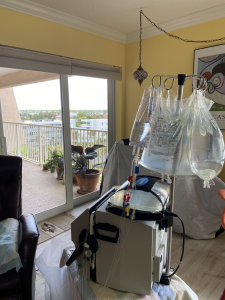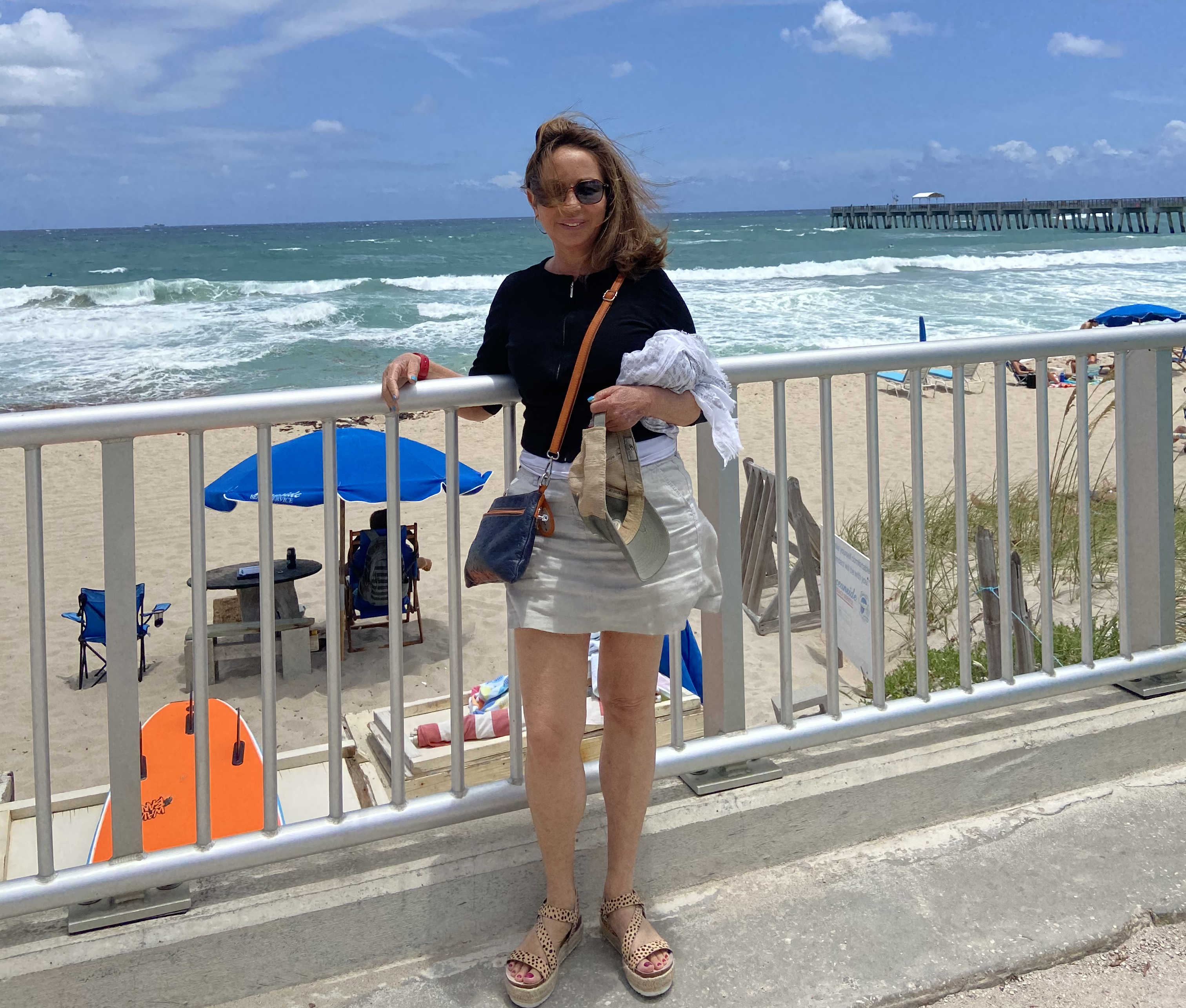
By Vanessa Evans, Sr. Manager, Patient Communities and Advocacy at Fresenius Medical Care North America and DPC Board Member
Brenda and Bernie Alvey are the consummate camper travelers, crisscrossing the United States and taking in sights from the St. Louis Arch to the Grand Canyon. But their camper has a few unusual features, including two recliners, extra outlets, and a homemade stand to accommodate Brenda’s portable home hemodialysis equipment.
The Alveys have always loved traveling, but they thought their trips had come to an end when Brenda was diagnosed with Membranoproliferative Glomerulonephritis (MPGN), an autoimmune disease that destroys kidney function.
Upon starting dialysis treatments in 2015, Brenda opted for home hemodialysis with the NxStage system, giving her the freedom to travel. Before the global pandemic, Brenda and Bernie traveled widely with a purpose, visiting dialysis centers to tell others about their success with home hemodialysis on the road.
Like the Alveys, I too love to travel and travelled often before COVID-19 made it unsafe. I have discovered that with good planning and a can-do attitude, travel is possible when you are on home hemodialysis. I know this very well, as I have been on dialysis for over 23 years. I switched to home dialysis when my husband and I wanted to start a family and I have never looked back since. That was over 16 years ago, and today I have two boys, ages 14 and 16 years old. To my boys, dialysis is just part of our lives, including when we travel.
Admittedly, I was nervous about taking my first trip. But then I thought, “You can get over this, you can do it!” I took things slowly, starting with a trip to Cape Cod, where my family rents a house every summer. It was a familiar destination, and we could drive there rather than fly. I packed up my dialysis machine and all my supplies, and off we went. That first trip changed me. From then on, I knew that I could travel.
things slowly, starting with a trip to Cape Cod, where my family rents a house every summer. It was a familiar destination, and we could drive there rather than fly. I packed up my dialysis machine and all my supplies, and off we went. That first trip changed me. From then on, I knew that I could travel.
Since that first trip, I’ve made more than 40 – typically two or three a year – including flying overseas three times. I travel for work as well and have become a pro – I’ve picked up tips along the way that you, too, can use when it is safe to travel again.
Begin planning well in advance. Start by connecting with your care team at least 60 days in advance for domestic travel and eight weeks in advance for international travel so that they can help submit your travel prescription and make other arrangements, such as shipping supplies. I’d also recommend that you make a checklist of everything you’ll need, including your machine, medical supplies, non-medical supplies, including, pliers, to undo stuck tubing, scissors, trash bags and an extension cord, as well as personal and medical information.
Travel can also be unpredictable, so there are things you can do to help prepare. Try and ship your supplies so that they arrive before you do. This way, you can check with the hotel or wherever you’re staying to ask them how many boxes they’ve received to ensure it matches what was sent. I also ask them to text me a photo to make sure it’s the right equipment. I also try to build in plenty of time to get to my destination, accounting for delays and issues that invariably arise during travel. I’ll even dialyze the day before travel so that if there is a delay, I have a 24-hour buffer before needing a treatment.
If you’re flying to your destination, there are some additional tips that I’ve found to be helpful during my travels. First, I advise that you bring a copy of the Department of Transportation Guidance on the Transport of Portable Dialysis Machines by Travelers with Disabilities with you to the airport. Among many other key pieces of information, the guidance states that, by law, airlines can’t charge you for shipping your life-saving medical supplies within the United States, so pack your supplies in a separate suitcase from your clothes so you don’t get charged. I also find it helpful to get a cart for your equipment and luggage and head to the check-in counter; or check your luggage and equipment with a skycap when you arrive at the airport.
For travel outside of the United States, ask your care team for insights and tips and research the rules for your destination, which vary. For example, you may have to pay additional fees to have your supplies delivered. It’s an added expense and it’s not easy, but it’s well worth it. Make sure to check with your insurance provider to get all the details on what is covered based on where you travel. There are many helpful resources available on the Fresenius Kidney Care and NxStage websites, including checklists, tips for travel and more.
When I arrive at my destination, the first thing I do is set up my machine to be sure everything is working, and I have all of the supplies I need. If I can, I dialyze first thing in the morning, which frees up the rest of the day.
For your first trip, I suggest keeping it simple, such as a weekend at a friend’s house or a hotel nearby. It will help you get comfortable with packing up your machine and supplies, and help you learn what works for you. While it is possible to travel if you are receiving in-center hemodialysis, home dialysis gives you flexibility and makes travel much more manageable.
If you love to travel, there’s no reason to let hemodialysis slow you down. With good planning and the right attitude, exploring the world is well within your reach.
Bon Voyage and Happy travels!
Vanessa Evans has been on dialysis for over 22 years and lives in Boston, MA with her husband and two sons. A passionate advocate for the last 14 years, Vanessa does not let her diagnosis slow her down. She works full-time as the Sr. Manager of Advocacy and Communities for FMCNA. Vanessa has a master’s degree from Emerson College and a BA in Political Science from University of Massachusetts’s, Amherst. She has presented for many organizations including: NKF, PCORI, ANNA, AAKP, FDA and HHS. She is considered an expert in patient experience and engagement.




